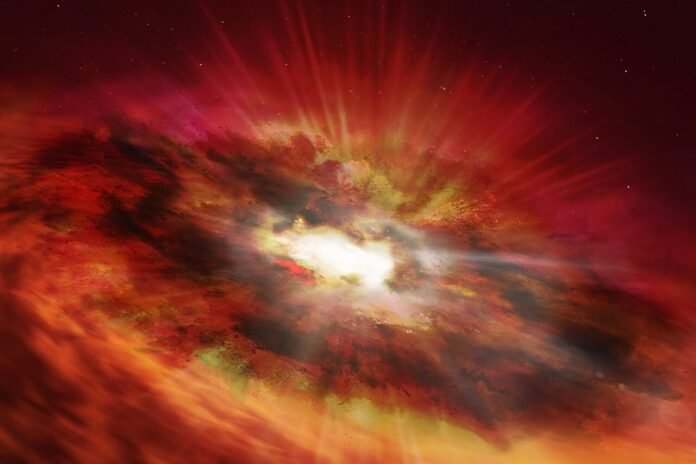With the recent first light milestone for the Vera Rubin observatory, it’s only a matter of time before one of astronomy’s most long-awaited surveys begins. The Legacy Survey of Space and Time (LSST) is set to start on November 5th, and will scan the sky of billions of stars for at least ten years. One of the most important things it hopes to find is evidence (or lack thereof) of primordial black holes (PBHs), one of the primary candidates for dark matter. A new paper from researchers at Durham University and the University of New Mexico looks at the difficulties the LSST will have in finding those enigmatic objects, especially the statistical challenges, and how they might be overcome.
A PBH would show up in the LSST via a microlensing event. When it passes in front of a star, its gravitational pull will cause a miniature gravitational lens, causing that star to increase in brightness quickly, which the LSST should be able to capture. However, there are plenty of other stellar phenomena, from regular variable stars to noise in the telescope’s imaging system, that could also cause the same temporary increase in a star’s brightness.
Differentiating between the increases in brightness from microlensing vs other potential sources is critical to the successful hunt for PBHs. If too many non-PBH causes are thought by an algorithm to be caused by PBHs, then it significantly complicates the search efforts for real PBHs. In statistics, this phenomena is known as a False Positive Rate (FPR) – when a system thinks it found something but it was actually caused by something else. They can be found in science, engineering, and perhaps most critically, medicine, as they are commonly used in tests for breast or colon cancer.
Fraser is excited about the potential of the Vera Rubin Observatory and the LSST.
According to the researchers, due to the sheer number of stars the LSST will be monitoring, and how often it will do so, lowering the FPR as far as possible will be critical to the successful discovery (or lack thereof) of black holes. They picked a one in ten million chance of a false positive rate, and tested a series of filters on simulated LSST data to judge whether or not those filters could maintain that FPR.
The worst they looked at was a χ2 (chi-squared) filter. This common statistical test looked at how well a specific “lightcurve” matched a known microlensing event, and compared the likelihood of that to the likelihood of a non-microlensing event. Random noise in light curves cause wreak havoc on this selection algorithm, and it ended up performing the worst of the three on the simulated data.
A better method was a Boosted Decision Tree (BDT), a type of machine learning algorithm that learned to differentiate between “constant” and “microlensing” light curves. However, the best method was the Bayesian Information Criterion (BIC) ratio, which is similar to chi-squared but includes a penalty for complexity, which can eliminate random noise.
Fraser describes what to expect when searching for PBHs.
The authors took their statistical analysis a step further, though, and modeled the extreme tails of the distribution of the BDT and BIC light curve outputs and tried to fit them with their own statistical distributions. Using that unique technique, the authors could further lower the false positive rate down to something more manageable.
Ultimately, using their statistical techniques, the authors believe the LSST can constrain the sizes of PBHs even after only one year of LSST data collection. The full ten years would add another order of magnitude on that constraint. With that better understanding, we might be able to definitively say whether or not PBHs are a viable dark matter candidate.
There is some future work to do though, especially around working with the cadence of the survey itself. The simulated data used in the paper doesn’t accurately reflect how the Vera Rubin will actually be observing the night sky, and that cadence could affect how its light curves are interpreted. But the cool thing about a new telescope coming online is all the ways it gets to improve over its operational lifetime. With the start of the LSST only a few months away, its an exciting time to be an astronomer.
Learn More:
M.C. Romao et al – Dark Classification Matters: Searching for Primordial Black Holes with LSST
UT – A New Way to Detect Primordial Black Holes Through Their Hawking Radiation
UT – Could Primordial Black Holes Be Hiding in Plain Sight?
UT – Globular Clusters: The Vera Rubin Observatory is Just Getting Started


